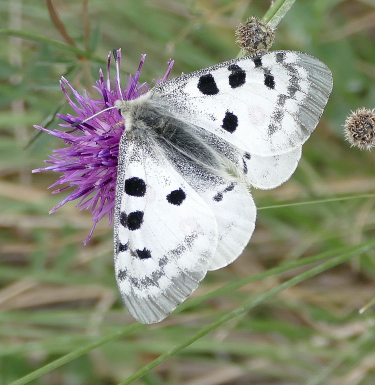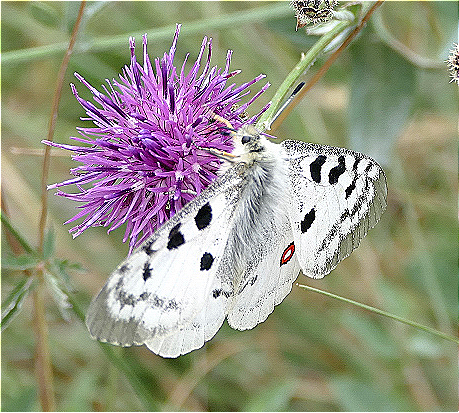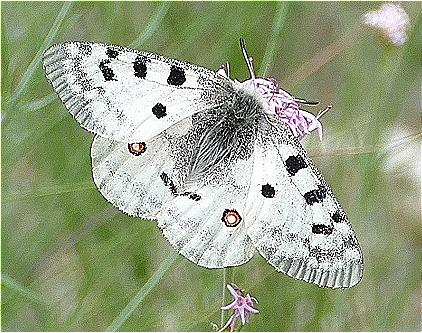Check the ingredients!
... live healthy!


| "Descrizione" by Cpt98 (2972 pt) | 2023-Sep-12 11:26 |
| Evaluation | N. Experts | Evaluation | N. Experts |
|---|---|---|---|
| 1 | 6 | ||
| 2 | 7 | ||
| 3 | 8 | ||
| 4 | 9 | ||
| 5 | 10 |
The butterfly Parnassius apollo L. or also called glacialis Parnassius, belonging to the family Papilionidae, was quite common in Europe in the 19th century. However, its distribution and population size declined sharply during the 20th century, so nowadays it is a threatened species (Nakonieczny et al. 2007 ; van Swaay et al. 2010 ; Łozowski et al 2014 ) especially by Wolbachia, a bacterium that can cause reproductive alterations, modulation of some physiological responses (immunity, stress) and resistance to viral infections. Wolbachia is the most frequent endosymbiont in this group of butterflies and is present in about 30 percent of the species tested (1).

Parnassius apollo L is found in hilly and mountainous areas between 500 and 2300 meters, in Europe, Asia, and the Americas.
The salient feature of this white-colored butterfly are two red dots on the hind wings, while the forewings have 5 to 7 black dots.

Distribution. The Apollo can be found across various regions of Europe, from Central Europe to the mountainous regions of Southern Europe. It is particularly adapted to mountainous zones and high altitudes.
Morphology. This species stands out with its large white wings adorned with characteristic red or black spots. The translucent wings and red spots give the Apollo a distinctive and easily recognizable look.
Life Cycle. Like many butterflies, the Apollo undergoes a complete metamorphosis, from egg, to caterpillar, to chrysalis, to finally emerge as an adult butterfly. During its caterpillar phase, it tends to feed on various plant species, while the adults feed on nectar.
Dietary Habits. Apollo caterpillars primarily feed on plants of the Sedum and Origanum genus. Adult butterflies, on the other hand, feed on the nectar of various flowers.
Conservation Status. The Apollo is considered vulnerable in many of its distribution areas, owing to habitat loss, climate change, and other anthropogenic threats. It's often used as an indicator species to gauge the health of mountain ecosystems.

References_____________________________________________________________________
(1) Kinga Łukasiewicz, Marek Sanak, Grzegorz Węgrzyn A lack of Wolbachia-specific DNA in samples from apollo butterfly (Parnassius apollo, Lepidoptera: Papilionidae) individuals with deformed or reduced wing J Appl Genet. 2016; 57: 271–274. Published online 2015 Sep 30. doi: 10.1007/s13353-015-0318-1
| Evaluate |